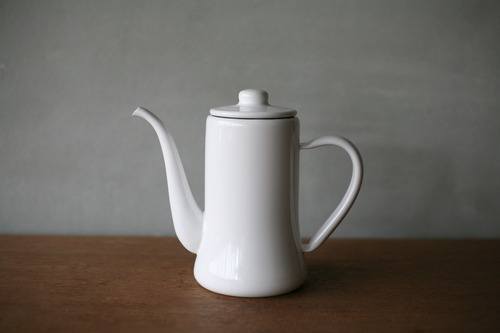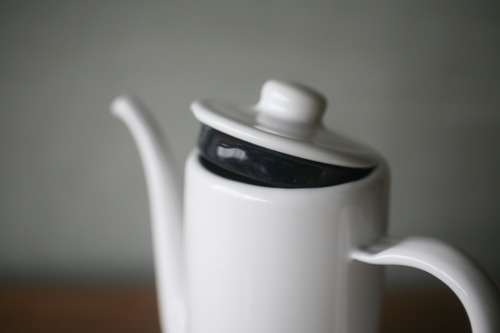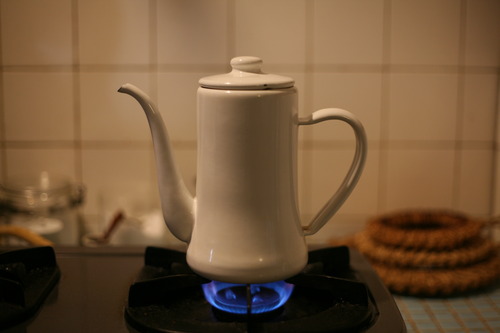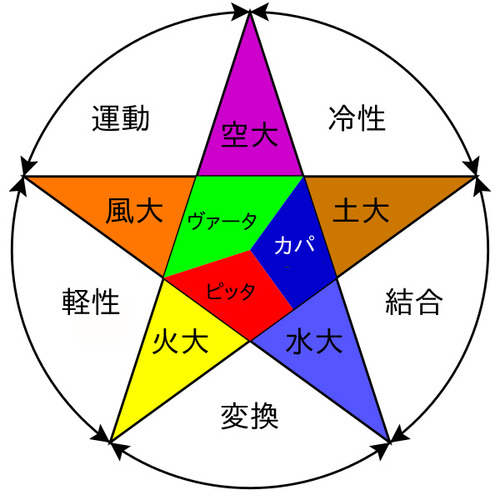



[Plain Hot Water and Enamel]
During seasonal changes in temperature, "plain hot water," which warms the body, may be a strong ally. Plain hot water has long been drunk in India, China, and Tibet, and appears to be a health practice derived from traditional medicine and folk remedies.
India has a traditional medicine called Ayurveda. Ayurveda is believed to balance the physical condition from the three energies (water, fire, and wind) of the body and mind, known as the "Tridosha." Plain hot water has three energy elements: kapha, the water element; pitta, the fire element of boiling; and vata, the wind element of the air bubbles created by boiling. Drinking plain hot water helps to maintain balance in the body.
In China, it is also customary to drink plain hot water. Traditional medicine, medical books, Chinese thought, and hygiene led to the culture of plain hot water, as health is related to body temperature, and if the internal organs function properly, there are no health concerns. Cold tea was actually reimported from Japan, and in China, there was no culture of drinking tea cold, and people drank hot tea to lower their body temperature by dissipating heat in the body through sweat.
In Tibet, a Tibetan medical proverb says, "The first disease is indigestion, the first medicine is plain hot water." When the stomach is deprived of heat, its ability to digest is weakened, and the energy to produce the human body itself is not produced. They say that regular consumption of ice water or cold food causes illness, so they avoid cold food, consume warm food, and keep the stomach warm. Although the climate of each region may have an influence, it is an ancient health wisdom to keep the body cool from within.
To make Ayurvedic plain hot water, once it comes to a boil, remove the lid and let it boil for 10-15 minutes without removing the lid. Air is added to the plain hot water by ventilating it and placing it on the fire as air bubbles are released. It is then cooled to a drinkable temperature and slowly drunk.
As for pots for making plain hot water, ironware, which supplies iron, and copperware, which is highly effective in sterilizing, are recommended, but enamel pots are easy to clean and can easily be used to make white water. The smooth surface material of enamel is an inorganic glassy glaze baked onto a metal surface. Enamel has the advantages of both metal and glass in terms of thermal conductivity, corrosion resistance, heat resistance, and scratch resistance, and is used for road signs and whiteboards, as well as many household items. And enamel material does not change the taste and flavor of food because it is difficult for bacteria to grow and does not undergo chemical changes. It is also suitable for storing pickles and jams because it is resistant to strong odors, salt and acid, and can be used over an open flame or in an oven because of its resistance to heat.
We wish you a warm body and a pleasant change of season.
Tsukiusagi's Slim Pot
https://www.shokunin.com/en/tsukiusagi/
References
https://ja.wikipedia.org/wiki/白湯
https://youtu.be/5Yoz8Z60Da4
https://ja.wikipedia.org/wiki/アーユルヴェーダ
https://www.tibethouse.jp/about/science/medicine/
https://ja.wikipedia.org/wiki/琺瑯
http://www.eco-union.jp/summary/booklet/vol43/open43_1.html